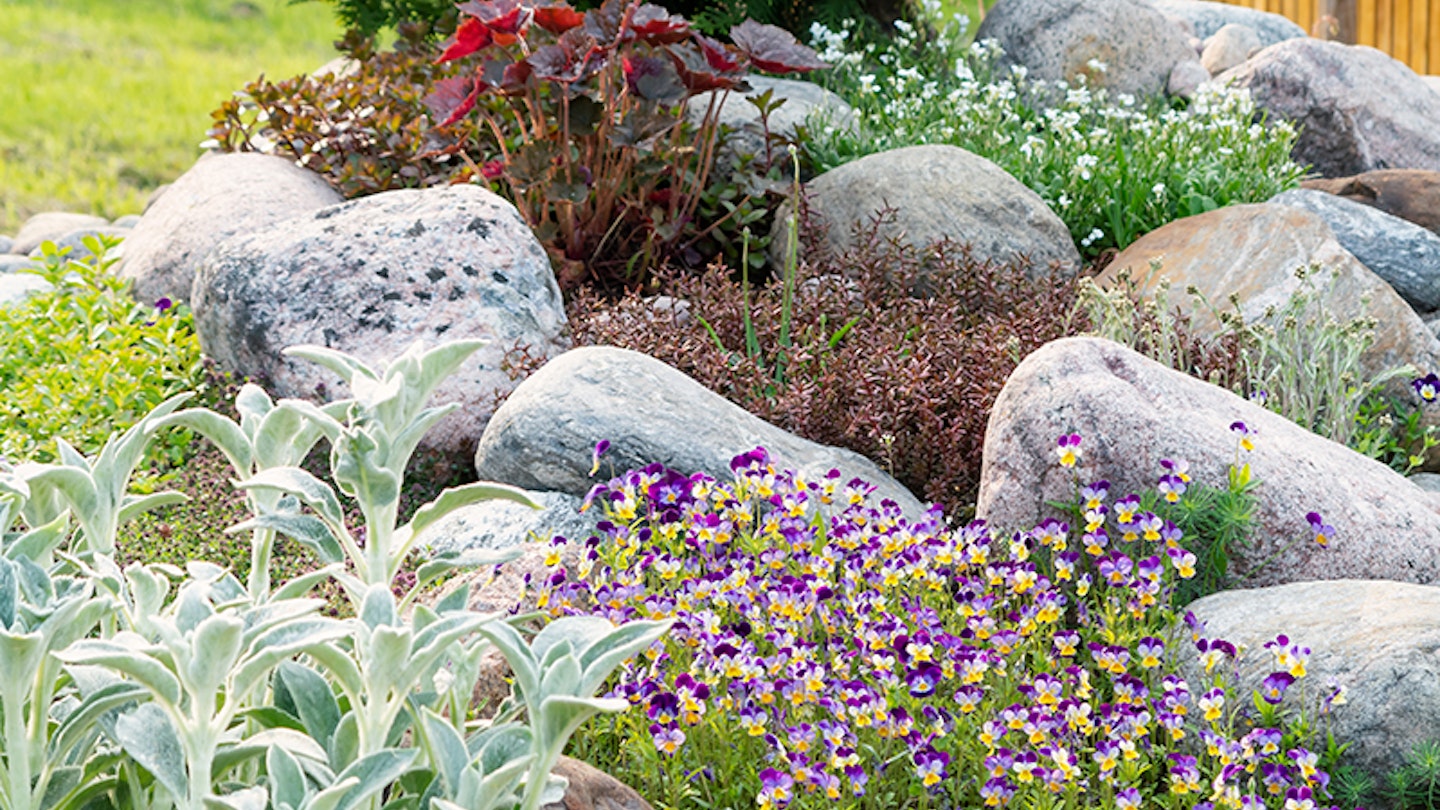A rockery, or rock gardening, re-creates the mountainous environment that Alpine plants grow in, crucially with plenty of sunlight and very good drainage, offering the opportunity for these low-maintenance plants to thrive. They also add structure and create a focal point in the garden. If you're looking for effective garden ideas on a budget, these rockery ideas may inspire you.
While rockeries were considered old fashioned for a time, a rockery revival is under way. A new generation of gardeners are once again buying boulders to build rock gardens. There are many reasons for this: gardeners today generally have less time and space to garden than their parents did, while rock gardening allows an urban gardener with a balcony or tiny plot to grow a huge diversity of different plants in a small space. Maintenance takes a fraction of the time required to deal with a similar number of plants in a large perennial border. In addition, many rock garden plants are notably tolerant of, or even fond of, dry conditions, making them the perfect answer to chronic summer drought.
Landscaping with rocks is a popular way to add interest to a yard or garden. Rocks can be used for various purposes, including erosion control, drainage, and decorative accents. When selecting rocks for landscaping, it is important to choose ones that are appropriate for the climate and soil type. Here's how to transform your outdoor space with a rockery.
Steps to build a rockery
1. Choose your rockery location
You need to choose the ideal location for your rockery. You’ll want to have the best light possible, so it should be away from trees, high walls and shrubs.
Rockeries can be large or small. For rockeries on a very large scale, you’ll need earth moving equipment, but we’ll be focusing on small-medium sized garden rockeries, and normal garden tools will be fine for this.
You can build your rockery on a level surface or a slope. However, if you do build on flat ground, you’ll need to dig into the soil or create a mound.
2. Mark out your garden rockery area
Using your design, mark out the area of your garden rockery with string or marker spray.
3. Clear the area and lay a base
Remove any turf and weeds from the area. Then add a layer of coarse rubble, broken bricks, stone, or pea shingle, at about 15cm deep.
You’ll also need to lay a weed prevention membrane, this allows water to drain away from your gravelled surface, whilst also preventing weeds and grass from growing through. Then add a layer of gravel or small rocks in order to improve drainage.
4. Set your large rocks
First, set your largest focal rocks (keystones). A crowbar can be used to move stones into a permanent position. Bed these in with weed-free topsoil, and then fill the rest of your area with smaller garden rocks to support these keystones. Again, bedding these in with topsoil. It’s a great idea to position these smaller rocks to create pocketed areas for your plants. When you get to planting, you’ll have an area laid out for these already.
5. Plant and lay mulch
Water your plants and place them whilst they are still in their pots onto the rockery - this gives you an opportunity to play with the layout and visualise what the rockery will look like as a finished product. Don't forget to allow enough space for their full size.
Carefully take the plants out of their pots, and plant them into compost. Once firmly set into the compost, dress the top with ground cover - gravel works perfectly for this as a layer of mulch.
Rockery ideas to inspire
Container rockery
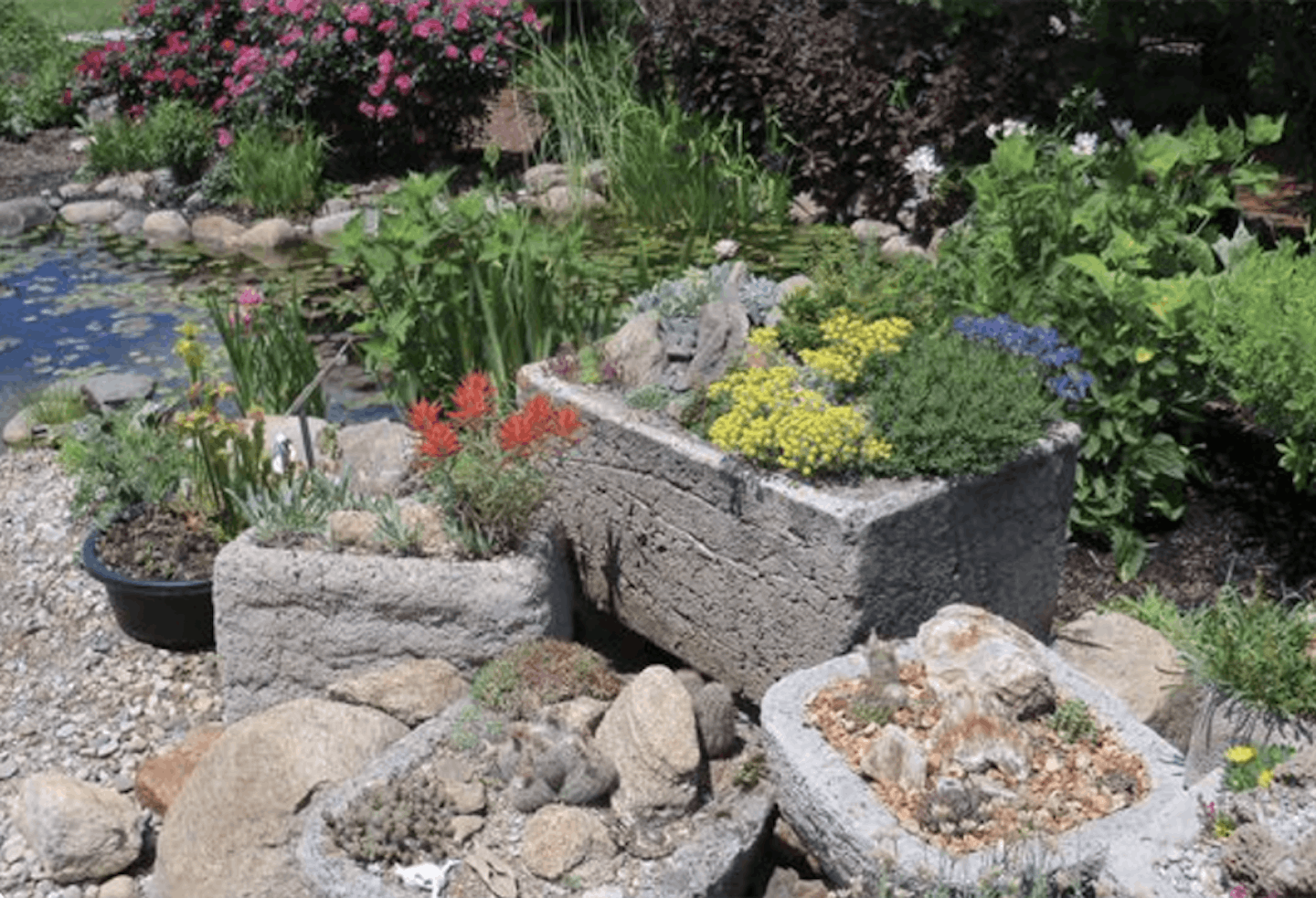
You don't have to build a rockery in the ground, nowadays, you may see miniature rock gardens in rock pots/containers or the like on porches, rooftops, or in shady places near a house. To avoid stooping low to see and enjoy the low-growing plants, troughs can be raised to a height of 40-60 cm.
Vertical rockery
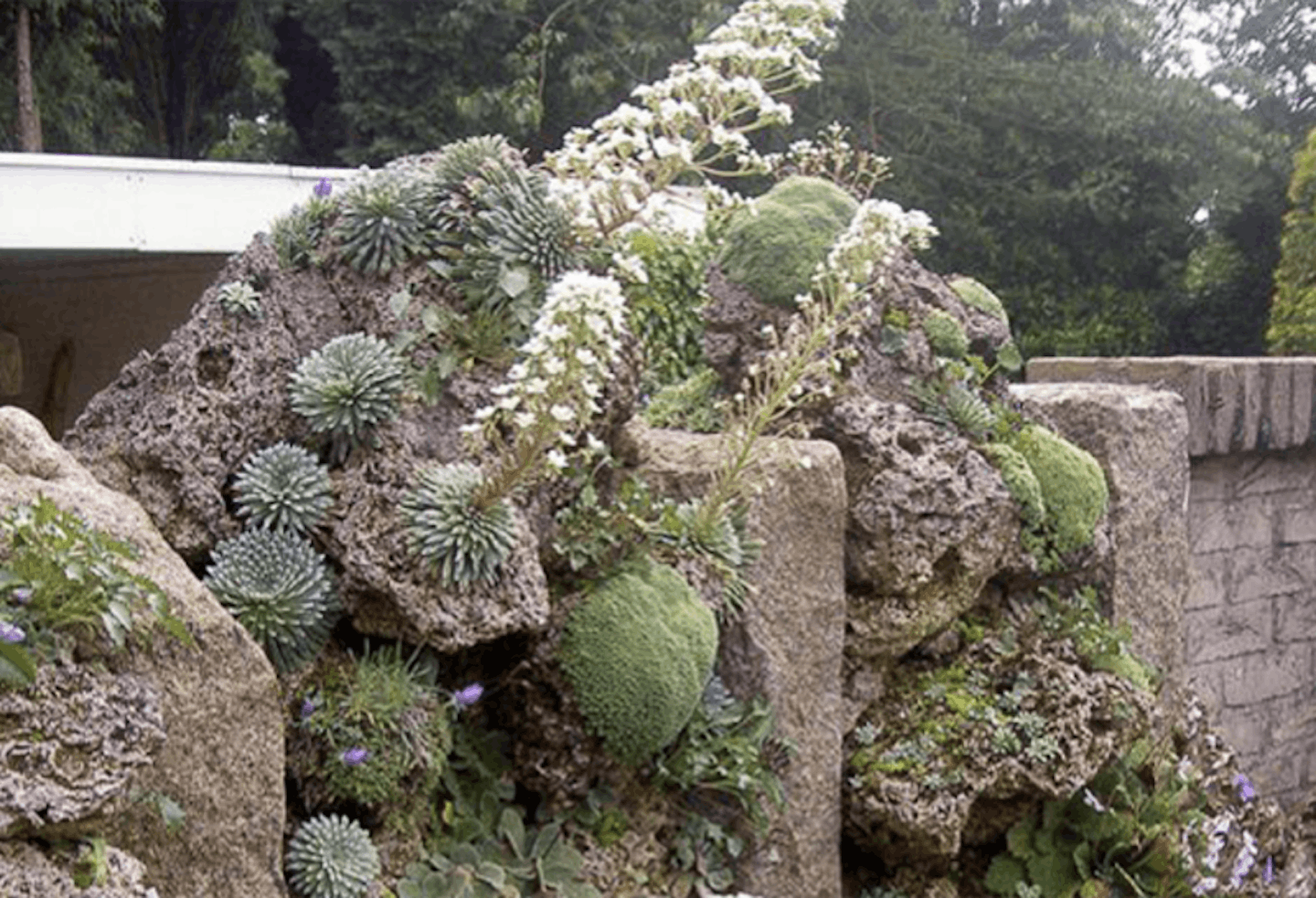
Crevice gardens or vertical gardens have become popular in recent years. Sandstone slabs set vertically can then be planted, or you could even use gaps in existing walls to introduce alpines with long root systems.
Mediterranean rockery
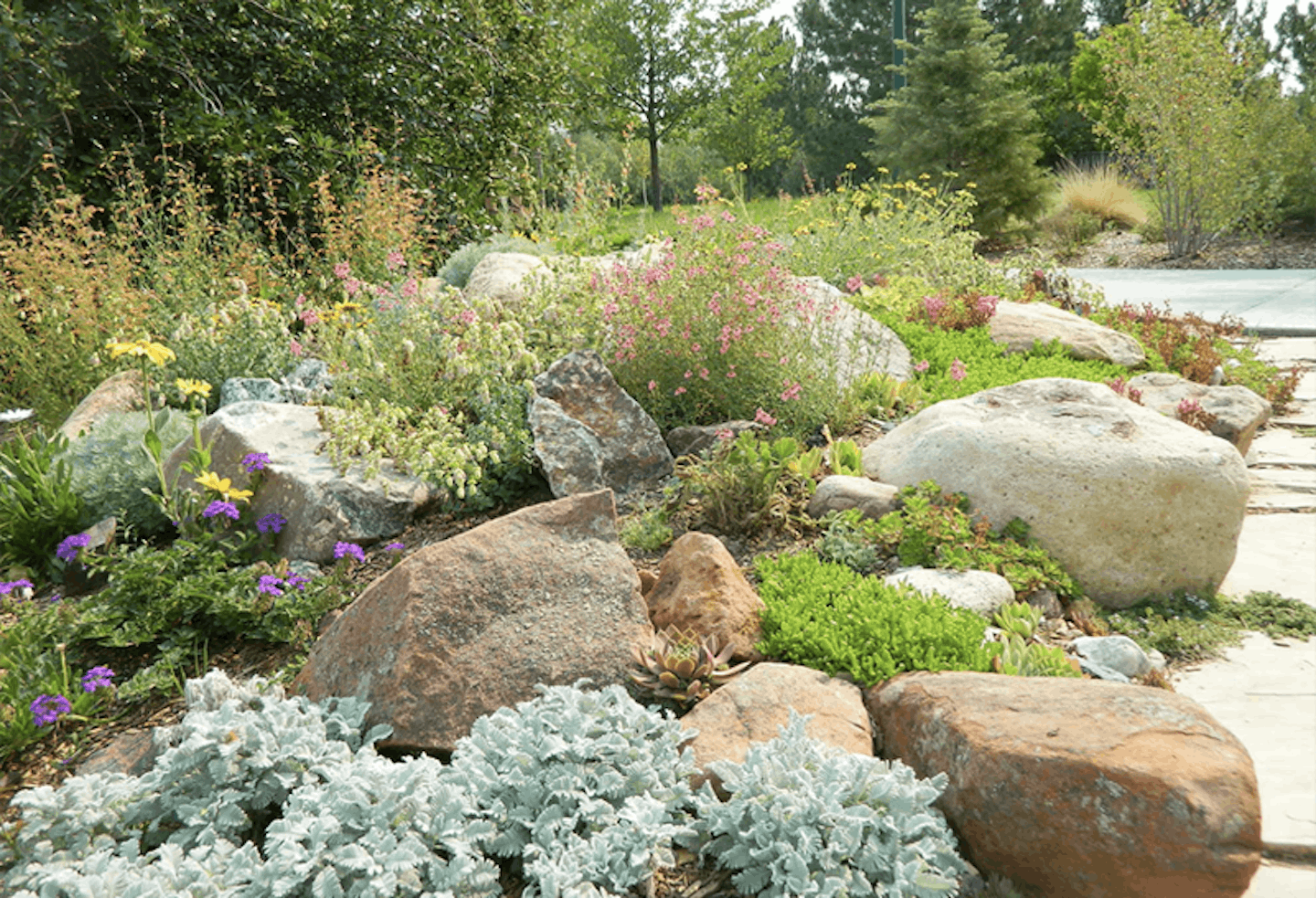
Mediterranean gardens are well known for their understated elegance. Inspired by coastal areas of Spain, France and Italy these gardens combine relaxed materials with striking plants to create a wonderful design. Gravel and rocks are great for creating that Mediterranean feel and will enhance your Mediterranean inspired plants to create a complete look.
Cacti rockery
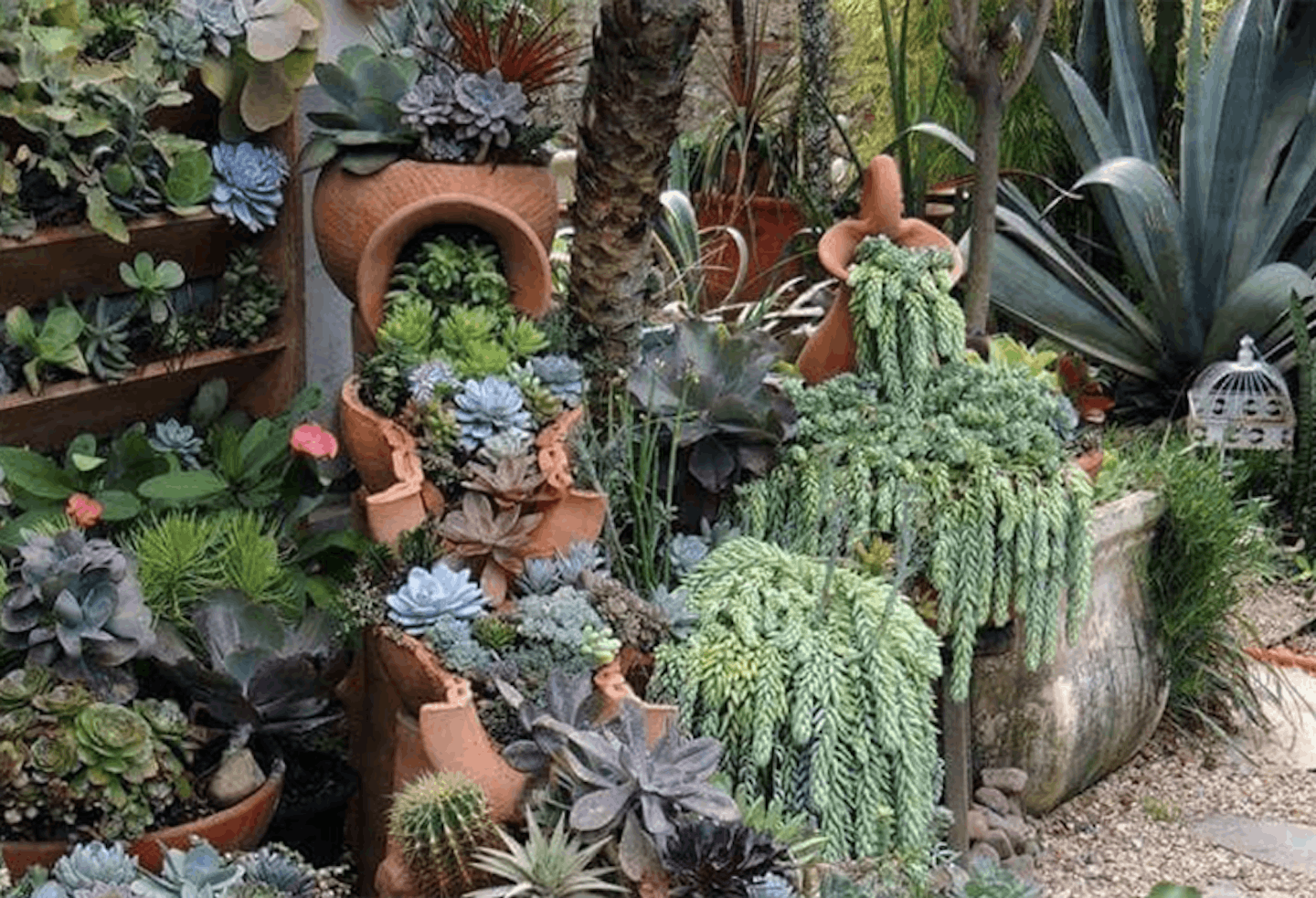
In recent years traditional rock gardening has evolved to include plants native to dry desert areas, too. These plants are just as happy in well-drained gardens as alpines are, and look just as lovely growing against rock.
Riverbed rockery
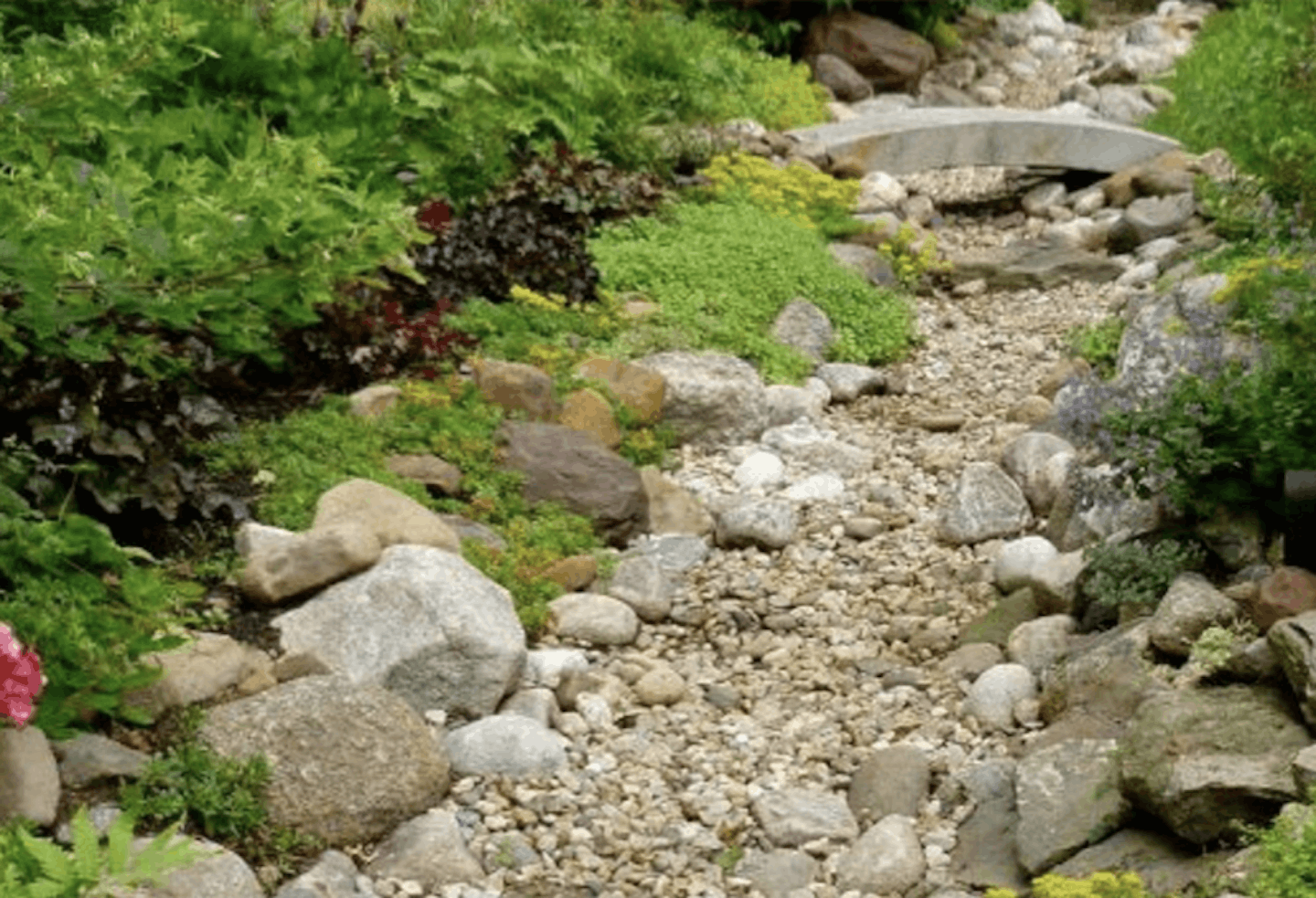
Dry riverbeds can avoid ruts in your landscape and can even put an end to drainage problems. There are numerous distinct shapes and sizes of river cobbles. Different stones make a perfectly natural look when they are assembled. Go for a blend of gray and tan rocks if you desire a warm looking dry river.
Zen rockery
Take inspiration from the masters of rock garden design with a Japanese theme to your rockery.
Rockery borders
A rockery can also be a great idea for borders for gardening. Using keystones in your borders adds interest and helps to define them from lawn areas. Use trailing plants to soften the look.
Rockery steps

If your garden has different levels, a rockery with natural stone or wooden steps is a great way to create a beautiful journey up to the next level of your garden, or differentiating between two areas such as the patio and lawn.
Coastal rockery
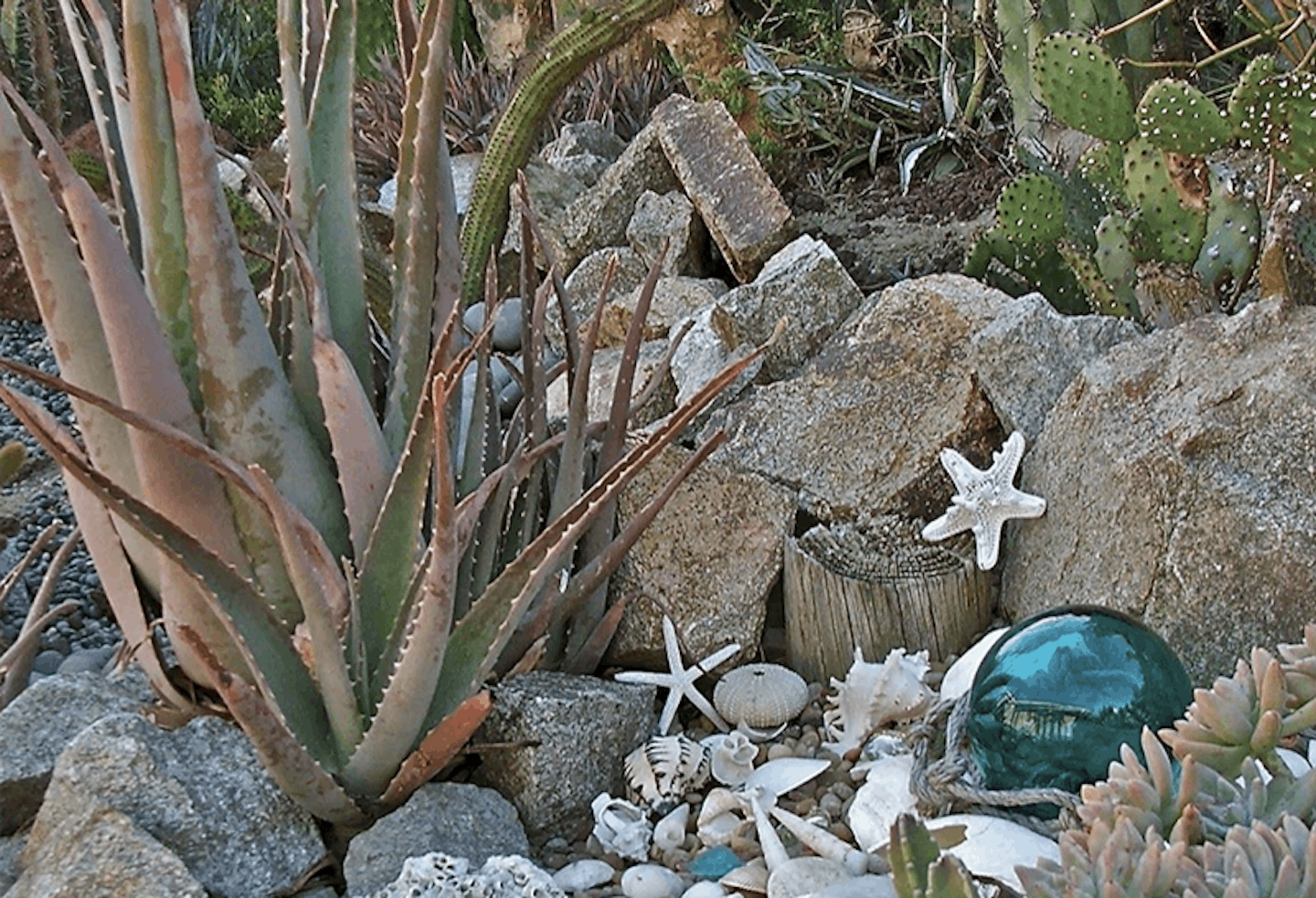
You don’t need sea views to get that fun, informal look in your own outdoor space. Most coastal plants will thrive in any garden with well-drained soil and a sunny spot. They are tough plants, used to battling strong winds and salty air, usually in poor soil or on steep banks.
Herb garden rockery
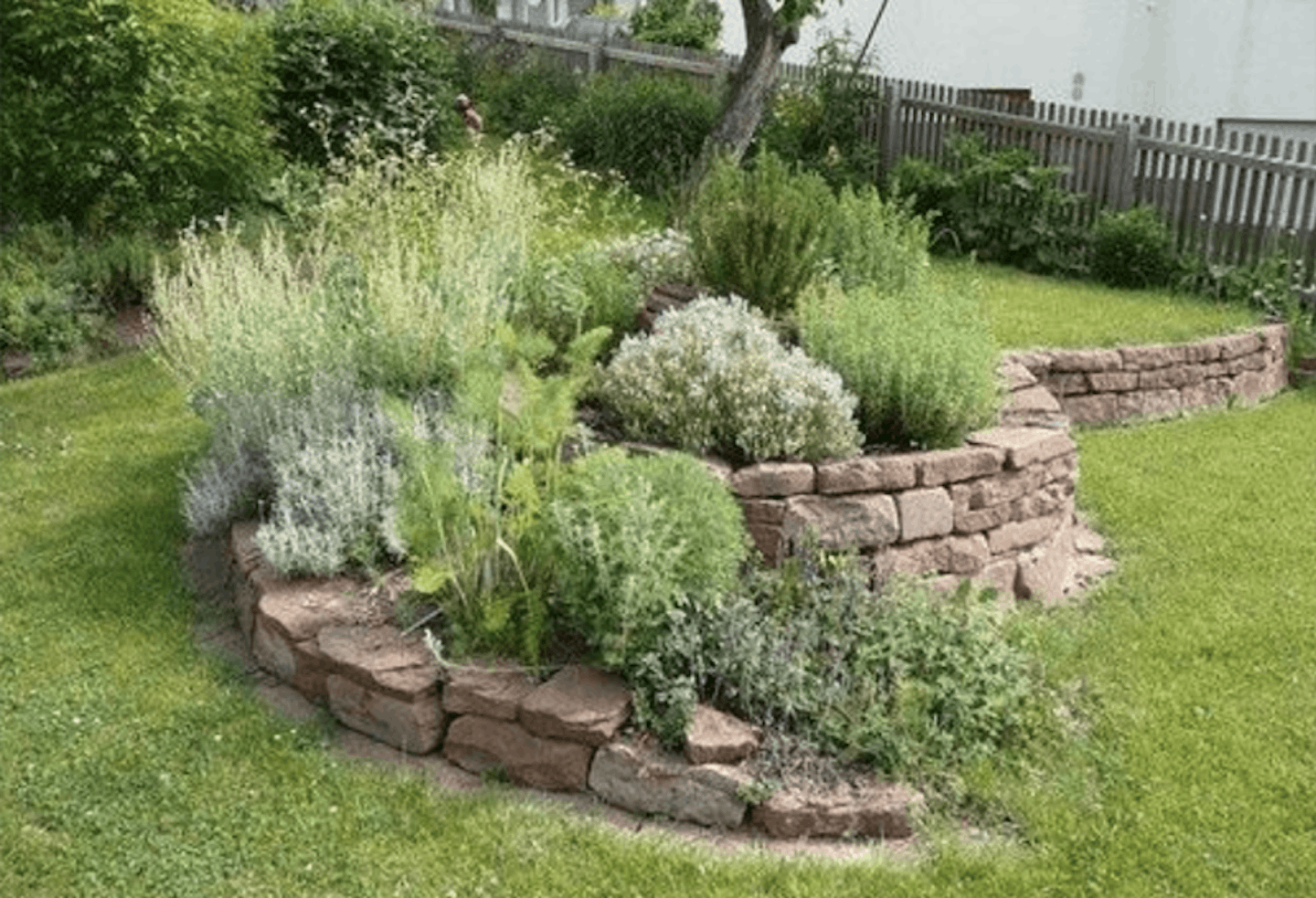
Herbs in the rockery can be used as a means to attract wildlife or simply as a site to harvest some delicious flavourings for your next culinary dish.
Soils and drainage in a rockery
Most plants growing in a rock garden are native to mountaintops and have adapted to a lack of soil. Drainage is the most important factor in creating good growing conditions for them; whatever soil you use it needs to allow water to drain quickly and easily so the plant doesn’t stay waterlogged. Most critically, water needs to move away quickly from the crown of the plant.
When creating your own soil mix for rockery plants there are four factors to bear in mind.
1 - Create a mix of pore sizes. ‘Pores’ are the spaces between soil particles and it’s these that affect the direction and speed of water travel in soil. Smaller pores (eg found in clay soil) hold water better than larger pores (eg in sandy/gritty soil). Because of its surface tension, water passes from materials with larger pores into those with smaller pores – a good reason not to put gravel in the bottom of containers as it will only trap the water rather than help it drain. Porous terracotta crocs, made of clay, are much better at absorbing any surplus water.
So, when building your rock garden, mix the grit and compost together thoroughly so water can drain smoothly through pores of all the same size. It’s usually recommended to combine one-third soil, one-third sand and one-third grit or gravel. The larger pores will ensure good drainage and oxygenation of the roots; small ones will hold a little more water for dry times.
2 - Create a fast-draining surface. Always top your compost mix with gravel or coarse grit so the water will drain quickly from the surface into the soil mix, and away from the plants’ crowns.
3 - Choose a deep container. Deeper containers provide quicker drainage at the soil surface than a shallower container holding the same amount of soil. Although shallow containers have a broader surface area, which is better for surface water to evaporate, deeper containers will hold onto a reserve of water deeper down, where the plant roots can reach it.
4 - Give the water somewhere to go. Whatever soil mix you use, you need a way for the water to drain out. Raised beds, containers or planting on a rock-terraced slope are all ways of keeping your soil from becoming waterlogged. Elevating your rock garden is also useful from an aesthetic viewpoint: the tiny plants are easier to see when you don’t have to bend down and a lot of flat little plants in a flat little garden can be, frankly, a bit boring.
What plants are suitable for a rockery?
Here are a few alpine plants that work really well in a rockery:
• Crocuses
• Campanula
• Sedum
• Sempervium
• Spring gentian
• Pulsatilla vulgaris
• Thyme
• Saxifraga
• Dianthus
• Miniature daffodils
• Miniature iris (iris reticulata)
• Delosperma
• Ajuga
• Phlox subulata
• Euphorbia myrsinites
• Iberis sempervirens
• Dwarf rhododendrons
• Lithodora
• Silene schafta
• Sisyrinchium
